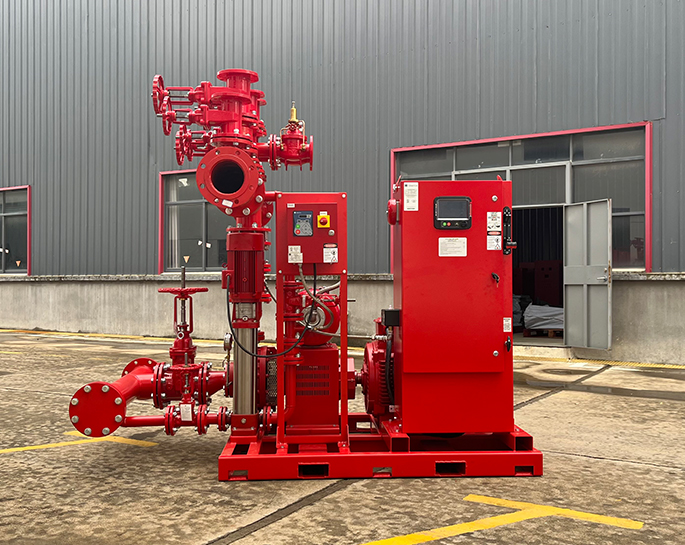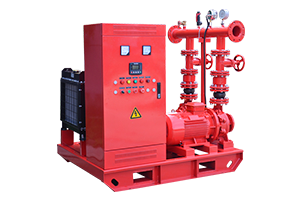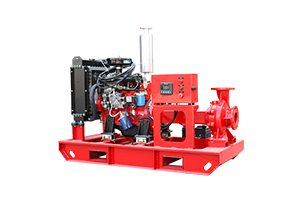What are the challenges of retrofitting a fire pump system in an existing building?
Aug 12, 2024
Share:
Retrofitting a fire pump system in an existing building can present several challenges, including:
1. **Space Constraints**:
- **Limited Space**: Existing buildings may not have enough space to accommodate the fire pump and associated equipment, requiring creative solutions or modifications.
- **Access Issues**: Maneuvering equipment into the building or specific areas can be difficult, particularly if the building was not originally designed with large equipment installations in mind.
2. **Structural Modifications**:
- **Load-Bearing Concerns**: Fire pumps and associated systems can be heavy, and the building's structure may need to be reinforced to support this additional weight.
- **Foundation Work**: Installation might require significant changes to the building's foundation, especially if a new water storage tank or heavy machinery is involved.
3. **Electrical and Mechanical Integration**:
- **Electrical Upgrades**: The building's existing electrical system may not be sufficient to support the new fire pump, necessitating upgrades or new electrical service.
- **Plumbing Adjustments**: Integrating the new pump with the existing water supply and distribution systems may require significant plumbing modifications.
4. **Compliance with Codes and Standards**:
- **Regulatory Compliance**: The retrofitted system must meet current fire safety codes, which may have evolved since the building was first constructed. Ensuring compliance can involve complex assessments and adjustments.
- **Permitting Challenges**: Obtaining the necessary permits can be time-consuming and may require detailed documentation and approval from local authorities.
5. **Operational Disruptions**:
- **Minimizing Disruption**: Retrofitting often requires shutting down portions of the building, which can disrupt normal operations. Careful planning is required to minimize downtime and inconvenience.
- **Coordination with Other Systems**: The new fire pump system must be integrated with existing fire alarms, sprinklers, and other safety systems, which can be complex and require specialized coordination.
6. **Cost Considerations**:
- **Unexpected Costs**: Unforeseen issues, such as hidden structural weaknesses or outdated systems, can lead to cost overruns.
- **Budgeting for Upgrades**: Retrofitting may necessitate additional upgrades or repairs, such as replacing outdated piping, adding backup power, or improving water supply infrastructure.
7. **Environmental and Aesthetic Concerns**:
- **Preserving Aesthetics**: In some buildings, particularly historic or architecturally significant ones, there may be concerns about maintaining the building's appearance and character.
- **Environmental Impact**: Retrofitting might involve addressing environmental issues, such as dealing with asbestos or other hazardous materials in older buildings.
8. **Coordination with Stakeholders**:
- **Stakeholder Management**: Coordinating with building owners, tenants, local authorities, and contractors can be complex, requiring careful communication and planning.
- **Phased Implementation**: In some cases, a phased approach may be necessary, requiring detailed scheduling and coordination to ensure the building remains operational during the retrofit.
Addressing these challenges requires thorough planning, coordination, and often, collaboration with experienced professionals in fire safety and building engineering.

1. **Space Constraints**:
- **Limited Space**: Existing buildings may not have enough space to accommodate the fire pump and associated equipment, requiring creative solutions or modifications.
- **Access Issues**: Maneuvering equipment into the building or specific areas can be difficult, particularly if the building was not originally designed with large equipment installations in mind.
2. **Structural Modifications**:
- **Load-Bearing Concerns**: Fire pumps and associated systems can be heavy, and the building's structure may need to be reinforced to support this additional weight.
- **Foundation Work**: Installation might require significant changes to the building's foundation, especially if a new water storage tank or heavy machinery is involved.
3. **Electrical and Mechanical Integration**:
- **Electrical Upgrades**: The building's existing electrical system may not be sufficient to support the new fire pump, necessitating upgrades or new electrical service.
- **Plumbing Adjustments**: Integrating the new pump with the existing water supply and distribution systems may require significant plumbing modifications.
4. **Compliance with Codes and Standards**:
- **Regulatory Compliance**: The retrofitted system must meet current fire safety codes, which may have evolved since the building was first constructed. Ensuring compliance can involve complex assessments and adjustments.
- **Permitting Challenges**: Obtaining the necessary permits can be time-consuming and may require detailed documentation and approval from local authorities.
5. **Operational Disruptions**:
- **Minimizing Disruption**: Retrofitting often requires shutting down portions of the building, which can disrupt normal operations. Careful planning is required to minimize downtime and inconvenience.
- **Coordination with Other Systems**: The new fire pump system must be integrated with existing fire alarms, sprinklers, and other safety systems, which can be complex and require specialized coordination.
6. **Cost Considerations**:
- **Unexpected Costs**: Unforeseen issues, such as hidden structural weaknesses or outdated systems, can lead to cost overruns.
- **Budgeting for Upgrades**: Retrofitting may necessitate additional upgrades or repairs, such as replacing outdated piping, adding backup power, or improving water supply infrastructure.
7. **Environmental and Aesthetic Concerns**:
- **Preserving Aesthetics**: In some buildings, particularly historic or architecturally significant ones, there may be concerns about maintaining the building's appearance and character.
- **Environmental Impact**: Retrofitting might involve addressing environmental issues, such as dealing with asbestos or other hazardous materials in older buildings.
8. **Coordination with Stakeholders**:
- **Stakeholder Management**: Coordinating with building owners, tenants, local authorities, and contractors can be complex, requiring careful communication and planning.
- **Phased Implementation**: In some cases, a phased approach may be necessary, requiring detailed scheduling and coordination to ensure the building remains operational during the retrofit.
Addressing these challenges requires thorough planning, coordination, and often, collaboration with experienced professionals in fire safety and building engineering.







